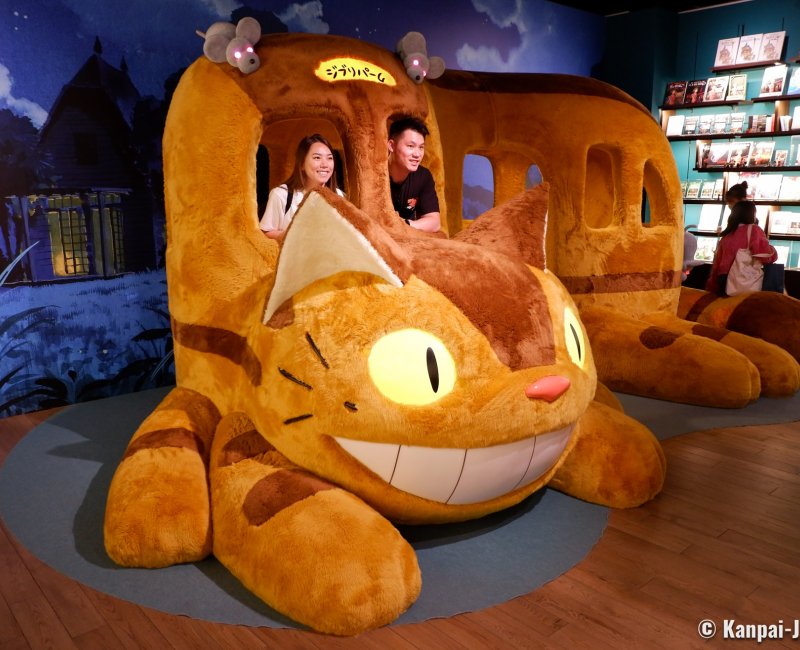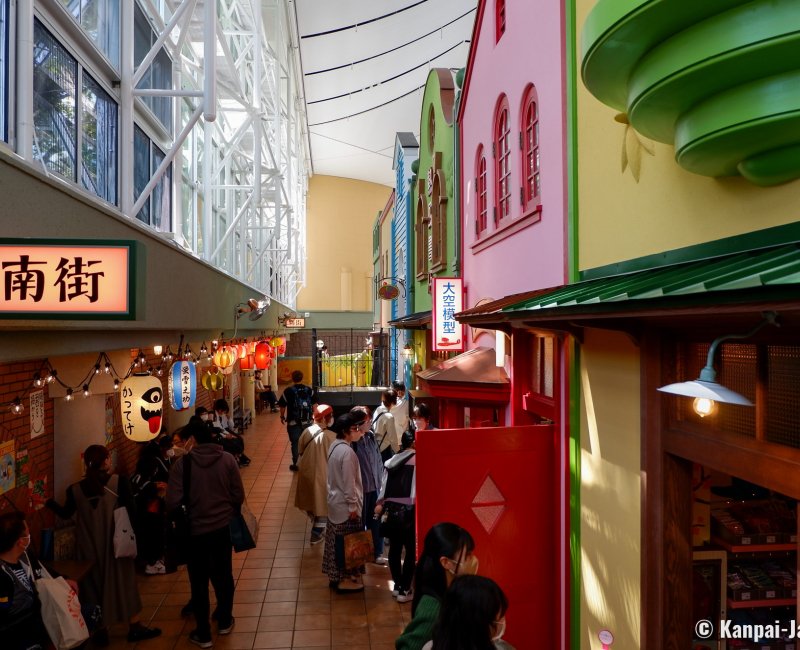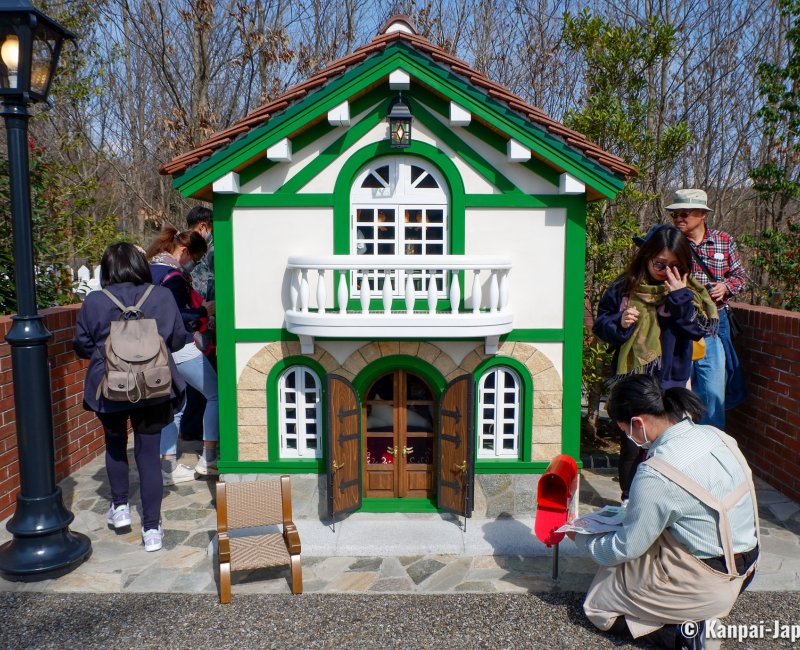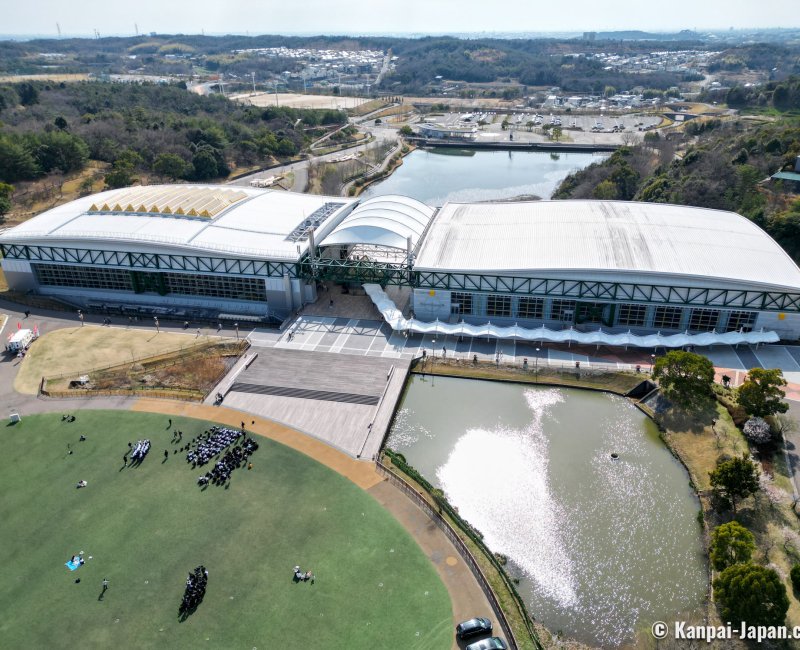Ghibli Park
Totoro’s Official Park in Nagoya
Ghibli Park is the 1st Studio Ghibli official theme park and is located in the Expo 2005 Aichi Commemorative Park (Moricoro Park) in Nagakute, a city east of Nagoya in Japan. Several worlds, with decors and settings based on the Studio’s animated movies, are open for discovery, especially for Ghibli long-time fans.
Studio Ghibli’s official park, announced on 2017, May 31 and named in English "Ghibli Park" opened to the public on 2022, November 1rst, a few days after Japan’s borders reopening to international tourism. The construction works started on 2020, July 28 and were not delayed by the Covid 🦠 pandemic. The construction costs are estimated to ¥34 billion (~241.4 million dollars), including ¥3 billion (~21.3 million dollars) for design and layout.
Moricoro Park in Nagoya’s suburb is not a random choice for the site: it was already home to Satsuki and Mei’s House, from My Neighbor Totoro, that was build for the Aichi World Expo in 2005 and opened to the visit ever since.
The project of Ghibli Park was therefore designed around this 1rst original reconstitution, and in close ties with Aichi prefecture, that operates Moricoro Park. Ghibli Park is a theme park 🎡 with recreations of settings from the studio's movies, and especially its famous film-maker Hayao Miyazaki’s movies. Do not expect the excitement of an attraction park, as there are no roller-coasters or thrilling rides there.
The press video below was shot on the day of opening:
Contrary to Ghibli Museum in Tokyo, visitors can take pictures throughout most of the park’s grounds, indoor and outdoor, with specific stagings, given that the place was designed to be highly Instagrammable.

5 worlds for children and die-hard fans
Ghibli Park encompasses 5 areas and spread on a 7,1 hectares superficies (of the 200 of the former Universal Expo’s site):
Mononoke’s Village opened on 2023, November 1rst. The last area, the Valley of Witches, is scheduled to open on 2024, March 16 for (construction works only started in 2021). Tickets prices will be adapted along the opening of the new areas, with new zones added for international visitors purchasing their tickets from overseas.
A small The Cat Returns area with free access is also available from summer 2023.
Families are the main target of this amusement park, with the will to accommodate children in the best way possible, as reflected by the selection of Ghibli movies on which the areas are based. Moreover, several playgrounds are intented for younger children only (under 12 years old).
On September 2023, Ghibli Park’s operator Aichi prefecture announced the commissioning of a vehicle inspired by My Neighbor Totoro’s famous Catbus and built by Toyota in March 2024. The small car 🚙 is designed to transport 5 passengers and a driver, in comfortable seats reminding of the softness of a cat’s fur, on designated roads in the park. To ride the world’s first Nekobasu, visitors will have to be inside the park to purchase a ticket illustrated by Hayao Miyazaki.

In March 2023, we could visit Ghibli Park’s 3 currently opened areas:
The Grand Warehouse as the only immersive world
Ghibli Grand Warehouse is arguably the best experience of the Park, where one really feels immersed into the Studio’s universe, minus the covering structure that used to protect an indoor pool until 2018. Of the previous facilities, a skating ring is still operating next to the Warehouse! The exterior structure has been kept as such, (especially the ceiling and industrial looking windows) to the detriment of an overall "Miyazaki-like" ambiance visitors might have expected.
While not overbearing, the decors selected from several Ghibli animated movies are well done and one can take the time to watch all the details of:
- Yubaba’s office (Director's Room), that seems quite lively but is actually only a small space to watch from the window and the door-frame;
- The world at Arrietty’s scale (The House Below and The Little People's Garden), which is nice to walk around, with an underground location for a well-thought staging;
- The robot soldier from the Castle in the Sky (Garden in the Sky) makes a lovely picture spot, although there is a waiting line;
- Hanging from the ceiling, a flying ship hides the glass roof and bring some movement to decors which are almost all motionless.

The large indoor space is divided into several zones mainly including exhibition galleries, 2 children’s playrooms (Cat Bus Room and Children's Town) and a lovely old-fashioned shopping arcade (Minami-machi). In a darker area, the "Warehouse’s attic" is home to decoration items that were used during previous Ghibli events in Japan and in the world.
We highly recommend to visit the 3 special exhibitions staged for the year of the park’s inauguration:
- Delicious! Animating Memorable Meals Expanded Edition, a mouth-watering food wax replicas exhibition displaying the most iconic meals drawn by the Studio, as well as storyboards and authentic drawings of food scenes;
- Everything Ghibli! gathers all the posters created for movies and DVD releases;
- Becoming Characters in Memorable Ghibli Scenes is the most interesting and popular installation in the Warehouse. In a life-size quiz for long-time fans, a course recreates the iconic scenes of 13 movies of the Studio. It is a fun area where one can become a Ghibli character for a moment and snap a picture.

Note that the staff is in full force and make sure that visitors respect the settings and instructions, such as the prohibition of taking pictures in specific places of the Warehouse.
However, we have been disappointed by:
- Cinema Orion, as the theater is airing the same short films as Tokyo’s museum. It feels like a missed opportunity to create something new for the occasion;
- The souvenir shop and the restaurants in the park, that lack choices and imagination, whereas these are usually Japan’s forte; you can only order an ordinary Italian pizza or a sandwich in the Warehouse’s cafe.
Cute walk in Dondoko Forest and Hill of Youth
Ghibli Park’s 2 other worlds are set in the outdoor, with 1 or 2 significant pavilions to discover in each area.
At the station’s exit, the Elevator Tower, its clock and upper balcony, is open to everyone and is also the access to the park below and the Hill of Youth. From there, head to the 2 buildings characterizing this first area:
- The World Emporium antique shop and the violin workshop, from the movie Whisper of the Heart; and,
- The very well made office with Baron and Muta from The Cat Returns, in a lovely tiny house fitting the size of the cats.

Then, walk further away in the Commemorative Park and cross the Toromon Gate to reach Dondoko Forest that encompasses:
- Dondoko-do, a kind of small temple dedicated to Totoro as a kami. Its statue is also a playground for children who can climb inside. Original omamori amulets are also available to purchase; and,
- Satsuki and Mei’s House, that preceded the opening of the park and benefited from a refreshing of its colors. The pleasure is the same as before as one can touch the objects, open the drawers and check every nook and cranny of the house.
Totoro’s universe is well transcribed in the buildings, but the forest lacks density and its presence is not very noticeable, especially in winter when the trees have lost their leaves. Next to this area, there is a humble Japanese stroll garden and its pond, and it is possible to have a matcha tea.

The Expo 2005 Aichi Commemorative Park as a backdrop
The map of the park provided at the entrance shows Ghibli worlds independent from one another: the Grand Warehouse and the Hill of Youth are next to each other at the center of the park, quickly accessible by the northern entrance served by public transports, whereas Dondoko Forest is located in the southern part, on the opposite side.
These different areas are connected by the walking paths of the Expo 2005 Aichi Commemorative Park, that are open to everyone and are not part of Ghibli Park. Ghibli Park should therefore be considered as a group of themed universes located in an overall distinctive space.
So instead of being completely immersed in Ghibli’s world, as it could be expected from a classical theme park, visitors are offered to enjoy the various installations of Moricoro Park: the last built for the Studio and the older ones remaining from the 2005 World Expo, such as:
- The central structure of the park home to the Ghibli Grand Warehouse and a non-related skating-rink;
- A Ferris wheel, the highest of the Tokai area;
- The park’s layout, characteristic of its history with various ponds, large lawns, several concrete buildings and large rectilinear paths from the station’s exit.
The immersive experience will hopefully improve after the opening of the 2 next and last Ghibli worlds.

Online tickets with limitations
Last but not least, getting a ticket for Ghibli Park is quite a feat by itself. Despite affordable prices compared to other large Japanese attraction parks such as Tokyo Disney Resort and Universal Studios Osaka, tickets are only purchasable online through an unnecessarily complicated process:
- Ticket must be bought 3 months in advance, and there is no ticket sold on site. The official tickets go on sale on the 10th each month for the full month set 3 months ahead (M + 3) on a "first come, first served" basis. For example, ticket sale for July open on April 10 at 2 p.m. (Japan Standard Time). However, tickets for March 2024 will be available to purchase 2 months in advance, that is to say from January 10, 2024.
- Until March 2024, there is no pass covering all the areas (!) and one must book a ticket for each zone. From March 2024, it will be possible to buy multi-areas passes, with various restrictions of use.
- There are 2 channels for buying tickets: from Japan or from overseas. Visitors must select accordingly a domestic ticket or an international ticket, as visitors' caps are enforced.
- Lastly, one must select a specific day and time slot for each area, as the number of visitors is voluntarily limited.
Consequently, there are very few places available for international visitors, who can only discover a limited part of the Park on restricted hours. Note however that die-hard fans who could not get their ticket can still go to the Lawson konbini at the northern entrance of the park, in the Rotunda Kazegaoka shopping area, to purchase Ghibli Park’s official goods. The Expo 2005 Aichi Commemorative Park however is open to everyone whether or not one has a ticket for Ghibli Park.

For visitors living in Japan or who could get a set of tickets or combined tickets thanks to a specialist travel agency, we recommend the following course:
- Start in the morning by the Grand Warehouse, since it is the least crowded moment and the area really worth to take the time to explore; then,
- Continue in the early afternoon by the Dondoko Forest, then end by Mononoke's Village or the Hill of Youth (or the other way round), allowing a 2,5 hours period for each area when booking, which is more than enough for these 3 zones.
Note that no re-entry is allowed once you have exited an area.
Ghibli Park is expecting 1 million visitors on the 1rst year, then 1,8 million per year after the 5 areas are opened. At this point, a ¥48 billion (~340.9 million dollars) of yearly revenue is expected.

While beautiful and enlivened with a lot of details, Ghibli Park is not immersive enough, and located in an area that is not convenient to travelers in Japan. It is therefore mainly aimed at people passionate about the Studio’s animated movies and families with young children. The renewal of temporary exhibitions in the Grand Warehouse and the opening of new areas may however spark a new occasion for visit or improve the experience.



